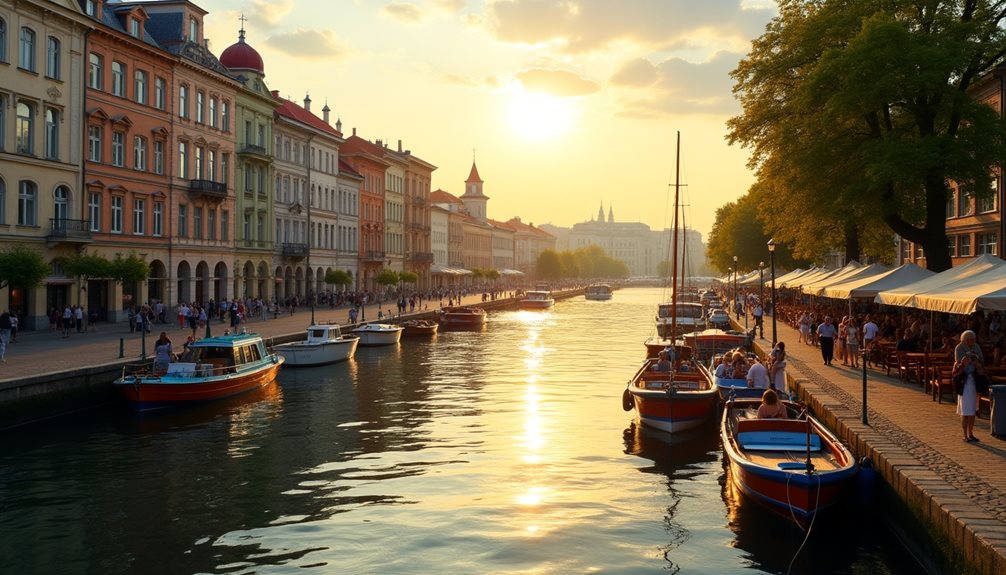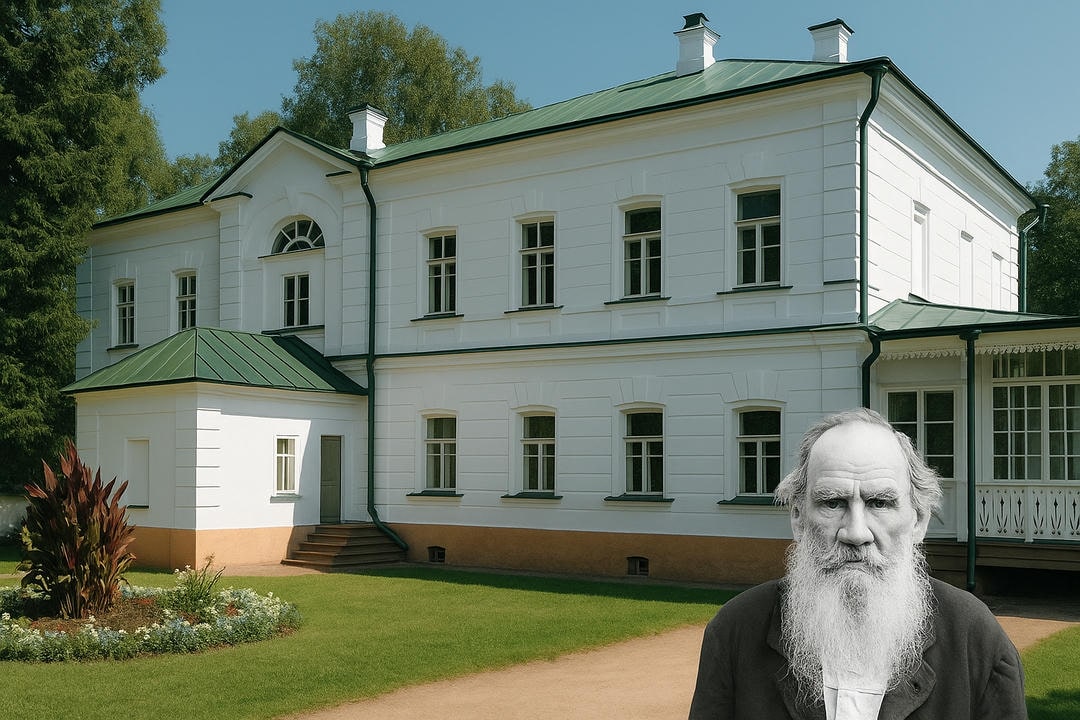When you think about Russian culture, you can’t ignore the profound impact of the Russian Orthodox Church. Established in the 10th century, it has been more than a religious institution; it’s intertwined with national identity, influencing everything from literature and art to social customs. Have you ever wondered how festivals and rituals have shaped societal values or how religious teachings have guided both individual and collective behavior? The Church’s role in education and its preservation of cultural heritage offer fascinating insights into its enduring influence. Curious about the specifics? There’s much more to uncover.
Historical Foundations
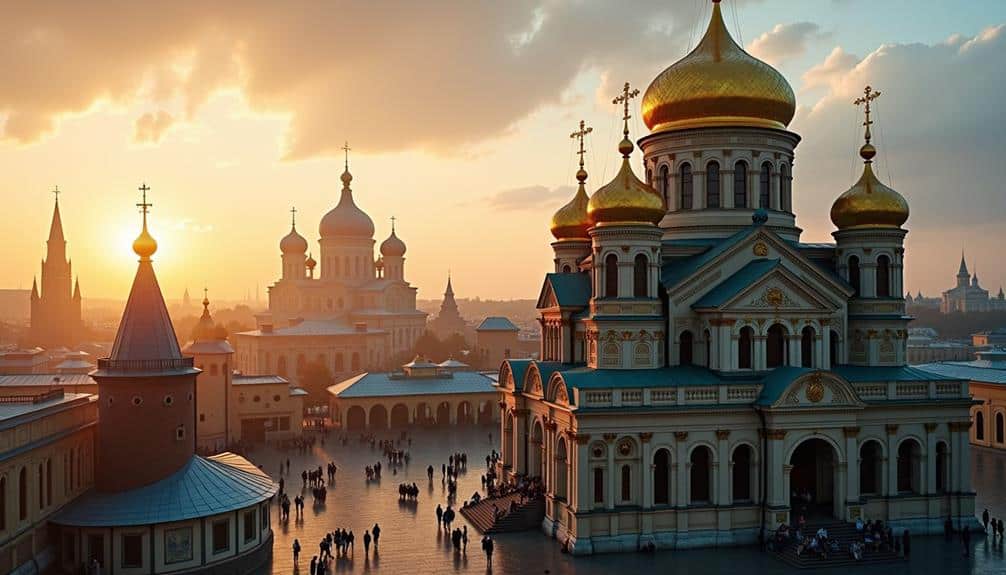
Established in the 10th century, the Russian Orthodox Church has deeply influenced the cultural and spiritual landscape of Russia. Its historical foundations are rooted in Byzantine influence, which shaped its ecclesiastical hierarchy and liturgical practices.
You can observe how the Church adopted Byzantine monastic traditions, fostering a rich spiritual literature that includes hagiographies, theological treatises, and liturgical texts.
The Church’s ecclesiastical hierarchy, modeled on Byzantine structures, ensured a robust administrative framework that allowed it to maintain order and influence. Historical schisms, such as the Great Schism of 1054, further defined its distinct identity, separating it from Western Christianity and aligning it more closely with Eastern Orthodox practices.
Political alliances have been crucial in the Church’s history. The symbiotic relationship between the Church and the state often bolstered the Church’s authority, allowing it to play a significant role in governance and societal norms.
Cultural festivals, deeply embedded in the liturgical calendar, offer a glimpse into how the Church’s traditions permeate Russian life, marking significant religious events with communal celebrations.
Through these historical foundations, the Russian Orthodox Church has continually shaped and enriched Russian culture.
Religious Art and Architecture
The profound influence of the Russian Orthodox Church extends beyond spiritual practices and governance; it has also left a lasting mark on Russia’s artistic and architectural heritage. When you explore religious art, you’ll discover iconic frescoes that adorn the walls of many Orthodox churches. These frescoes aren’t just decorative; they’re imbued with sacred symbolism, reflecting theological narratives and liturgical practices.
Moreover, the architectural styles of Russian Orthodox churches are distinctive, characterized by their onion domes, intricate designs, and use of religious iconography. These elements serve not only as artistic expressions but also as symbols of faith.
Monastery architecture, in particular, showcases a blend of functionality and spiritual significance, acting as centers for both worship and cultural preservation.
The religious iconography prevalent in Russian Orthodox art plays a crucial role in conveying spiritual stories and values. Icons, often painted on wood, are revered for their spiritual presence and artistic detail.
This tradition of artistic expression has been meticulously preserved and passed down through generations, ensuring that the cultural and religious heritage remains vibrant. By understanding these elements, you gain insight into how deeply intertwined art and faith are in Russian culture.
Influence on Literature
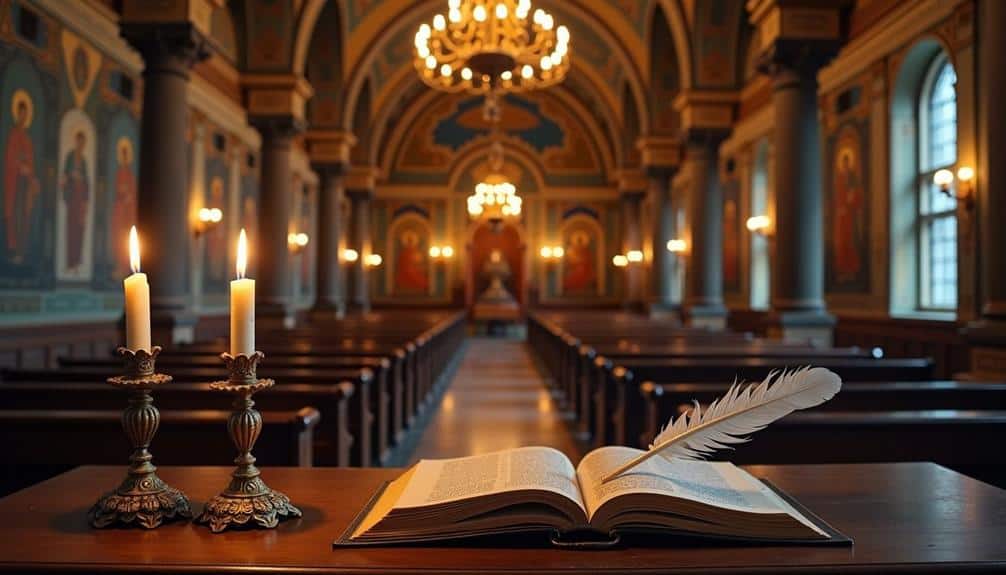
Beyond its tangible contributions to art and architecture, the Russian Orthodox Church has profoundly influenced Russian literature, weaving spiritual and moral themes into the fabric of its literary tradition. When you explore Russian literature, you’ll find mystical themes and spiritual symbolism that reflect the deep-rooted ecclesiastical influence.
Authors like Dostoevsky and Tolstoy often incorporated moral narratives and faith reflections into their works, creating literary allegories that delve into the human soul’s complexities and its relationship with the divine.
Through its integration into cultural narratives, the Church has shaped philosophical discourse in Russian literature. Writers engaged with ecclesiastical ideas, often questioning and interpreting the moral and spiritual dimensions of human existence. This engagement isn’t limited to overtly religious texts but permeates various genres, adding layers of meaning and depth.
Moreover, the Church’s role in preserving and promoting Slavic language and literature has been instrumental. By fostering a cultural environment where spiritual and philosophical questions are paramount, the Russian Orthodox Church has ensured that literature remains a vital medium for exploring profound existential and ethical issues.
Thus, its influence extends beyond the spiritual, deeply embedding itself in the literary consciousness of the nation.
Role in Education
Often overlooked, the Russian Orthodox Church has played a crucial role in shaping the educational landscape of Russia. You can trace its influence back to the establishment of church schools, which were pivotal in providing both theological education and general literacy. These institutions not only focused on religious curriculums but also integrated subjects like mathematics, philosophy, and the arts. The Church’s emphasis on moral teachings and spiritual development aimed to cultivate well-rounded individuals.
Faith-based programs initiated by the Church have been instrumental in community outreach, particularly targeting underprivileged areas. These programs often include youth engagement initiatives designed to foster a sense of community and ethical responsibility. Through religious curriculums, students are taught values that extend beyond the classroom, embedding a moral framework that guides them throughout life.
Moreover, theological education remains a cornerstone in the Church’s educational endeavors, preparing future clergy and lay leaders. This specialized training ensures that the spiritual and moral teachings of the Church continue to resonate within Russian society.
Social Customs and Traditions
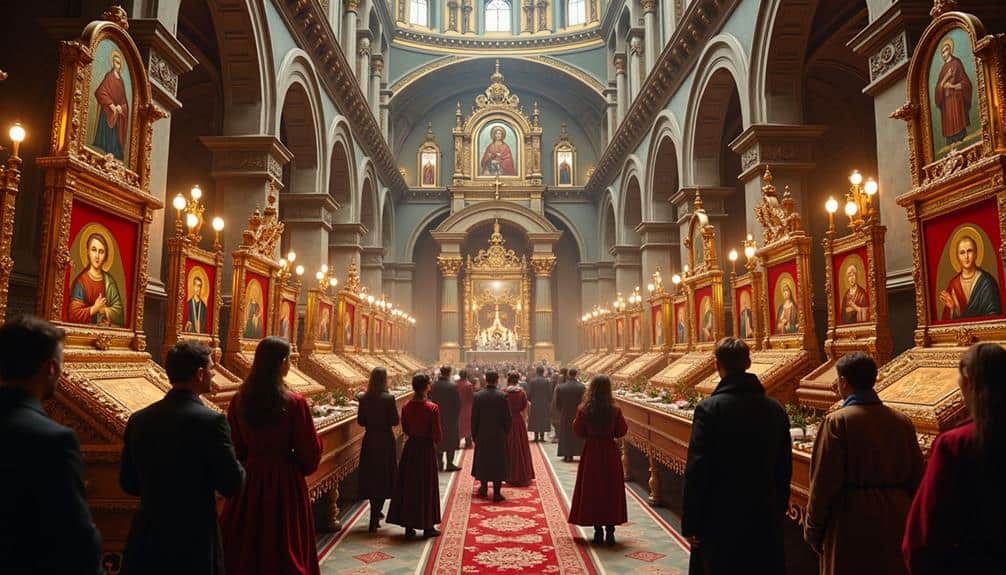
Embedded deeply within Russian culture, the social customs and traditions influenced by the Russian Orthodox Church offer a window into the nation’s collective identity.
Wedding rituals, for instance, are rich with spiritual ceremonies that reflect the Church’s emphasis on unity and sacred bonds. You’ll find that holiday celebrations such as Easter and Christmas are marked by elaborate liturgies and communal feasts, drawing families together in acts of worship and festivity.
Family gatherings often revolve around significant life milestones like baptisms and name days, where religious observances underscore the importance of faith in personal development.
Folk practices, intertwined with Orthodox beliefs, are evident in seasonal customs such as Maslenitsa, which combines both pagan and Christian elements in celebrating the arrival of spring.
Community events, particularly those held in rural areas, frequently include church services, processions, and blessings, reinforcing the Church’s role as a social hub.
The Church’s influence extends into the rhythm of daily life, guiding the structure and meaning of various customs.
Impact on National Identity
The Russian Orthodox Church has profoundly shaped the nation’s national identity, intertwining religious and cultural elements to create a unified sense of self. By embedding itself into the fabric of Russian society, the Church has established cultural symbols that resonate deeply with the populace. Icons, cathedrals, and liturgical music aren’t merely religious artifacts; they’re integral to the national consciousness. These symbols evoke a shared history and collective memory, fostering a sense of belonging among Russians.
You’ll find that the Church’s influence extends into national narratives, shaping how Russians perceive their past and envision their future. Historical events, such as the Christianization of Kievan Rus in 988, are celebrated as pivotal moments, elevating the Church’s role in the formation of a cohesive national identity.
The Church’s contributions to literature, art, and philosophy further underscore its impact, providing a moral and ethical framework for society.
In essence, the Russian Orthodox Church functions as a cornerstone of Russian national identity, weaving together religious devotion and cultural pride. Its pervasive presence in public and private life underscores its enduring significance, making it an indispensable part of what it means to be Russian.
Modern-Day Relevance
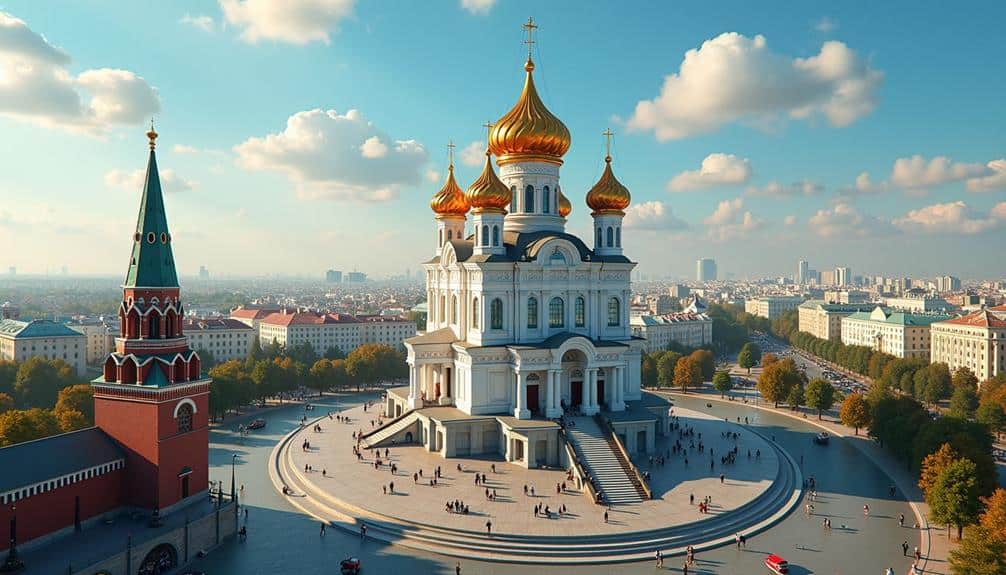
In today’s Russia, the influence of the Russian Orthodox Church remains robust and multifaceted, intertwining with various aspects of contemporary life. The Church actively engages in ecumenical dialogue and interfaith initiatives, fostering cooperation and understanding among different religious communities. These efforts are pivotal in promoting societal harmony and addressing modern challenges.
Cultural preservation is another significant role of the Church, as it safeguards traditional values and practices that have shaped Russian identity. Through community outreach programs, the Church addresses social issues, providing support to the needy and fostering a sense of solidarity.
Moral teachings continue to guide individuals in their daily lives, offering a framework for ethical behavior and decision-making. The Church’s involvement in political spheres, while sometimes contentious, reflects its ongoing influence in shaping national policies and public opinion.
Youth engagement is a critical focus, as the Church seeks to instill values and spiritual guidance in younger generations. By organizing educational programs and events, it aims to bridge the gap between tradition and modernity.



